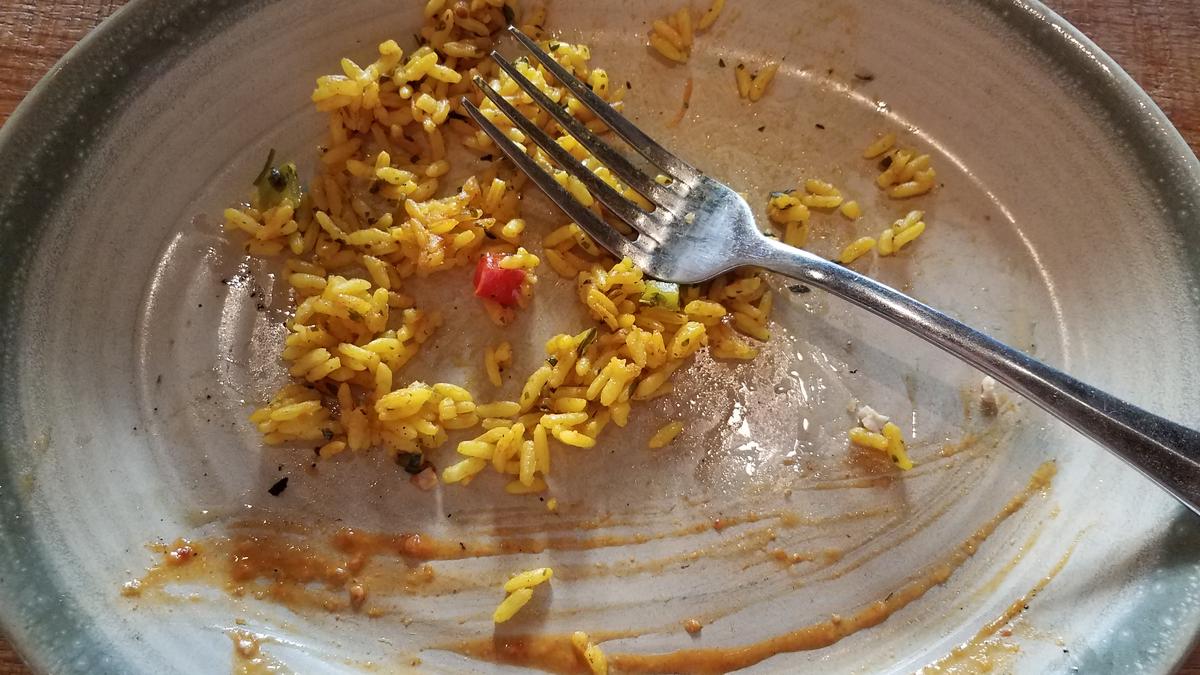During my first week in Mumbai three years ago, my cook walked into the house asking, “Aaj kya banau (What shall I make today)?” As I rummaged through the vegetables in the fridge, she made up her mind herself, declaring, “Aloo banati hoon; Bhaiyya ko bahut pasand hai (I’ll make potatoes; Bhaiyya loves it).” This continued for days, and my husband and I ended up eating several kilos of aloo and paneer — his favourites. One day, when I could no longer take it, I snapped. “Ek baar tho pooch lo ki mujhe kya pasand hai (Ask me at least once what I’d like),” I said to her. She laughed.
In Kiran Rao’s Laapataa Ladies (2023), when Jaya asks Yashoda why she stopped making the lotus stem stir-fry that she loved eating at her parents’ house, Yashoda says it is because her husband and son don’t touch it. “You like it. Make it for yourself,” Jaya says. Yashoda laughs, much in the way my cook did. “Since when do women make what they like eating,” she asks.
It is not uncommon for Indian women to believe that men’s dietary preferences should be considered foremost. It is also well-documented that many women are accustomed to eating leftovers because of the dictates of patriarchy. According to the 2011 India Human Development Survey, in about a quarter of Indian households, women are expected to have their meals after men have finished eating. This means that they end up with cold rotis, little dal, and no leafy veggies.
This can be true even of relatively progressive households. As the novelist, Shashi Deshpande, wrote in an essay titled Women, Food and Cooking (2022): “…My mother, protesting that she had had enough, possibly deprived herself when something was insufficient. Not just this; the burnt chapati was hers, the broken jowar roti was hers, the cracked cup was hers, the dented and smallest plate was hers.” For many women, while preparing food is a duty, responsibility, or a labour of love, the ritual of eating is considered a waste of time. You may find few women licking their fingers, burping, or scraping tasty titbits off the pan.
Being late to the plate has serious implications for women’s physical and mental health. Early this year, Maharashtra’s Health Department found that women are more likely to be susceptible to malnourishment and nutritional deficiencies than men. As this piece pointed out last week, not just women’s health but maternal health too is seen solely from the lens of pregnancy and childbirth. “In India’s long battle against malnutrition, women and girls remain the most overlooked section,” said this piece, ahead of World Nutrition Day (May 28).
Various efforts have been made to change this trend. In 2015, the Rajasthan Nutrition Project ventured on a mission to encourage families to eat their meals together in two districts. Despite finding stiff resistance, they managed to make a difference.
In 2017, Punita Chowbey found in her study of 84 South Asian women living in Britain, India, and Pakistan that women sometimes took matters into their own hands. Whenever they were upset with their husbands, they would alter the order in which they served food, or simply serve smaller portions (though they would give the extra portions to their sons).
This week, women were invited to attend an international film festival in the scenic village of Kadamakudy, Kerala, and served lunch and dinner. Fr Augustine Vattoli, the parish priest in the locality and the joint convenor of the festival, said in this piece, “We knew that it was not enough just to tell the women to come and attend the film fest. We knew they would ask us who would cook food then. But then we had the answer ready…” It was a thoughtful gesture: entire families, and not just men, enjoyed the festival together.
As for my cook, after being chided a few times, she sometimes walks in now announcing, “Aaj pulao banati hoon. Mujhe pata hai ki aapko pasand hai (Let me make pulao today, I know you like it).” I smile and tell her I cannot wait to dig in.
Toolkit
Bengaluru-based writers and teachers Nikhita Thomas and Pranav V.S. have embarked on a project to map places where women hung out in Bangalore’s Cantonment area between 1984 and 1994. They tell Preeti Zachariah that they chose this period because waves of liberalisation took place then, and more and more women could be seen on the streets of the city on the Kinetic Honda — a phenomenon that the historian, Janaki Nair, terms “kineticization”. Supported by the India Foundation for the Arts under its Neighbourhood Engagements of Project 560, this project “seeks to explore the spatial relationships women have with the cities and neighbourhoods they call home”. The stories of the women will come together in an art essay book and will be showcased at 1 Shanthi Road Gallery/Studio in Bengaluru on June 14 and 15.
Wordsworth
Reactionary feminism: Advocated by British writer Mary Harrington, this “begins from the truth that sex differences are real, irreducible and politically important.” Harrington in her work questions the very assumptions of modern feminism, which, she believes, has benefited only a small class of well-off, white-collar women. In this interview, Harrington, the author of the book Feminism Against Progress (2023), says to be a reactionary feminist is to “ground the way you live in recognition both of what makes us human together — and also in the distinct embodied capabilities and vulnerabilities of women, understood as powers and not merely as a problem to be solved with technology.”
Ouch!
Our sisters who lost their husbands in the (Pahalgam) attack did not have the warrior spirit or the resolve and vigour to fight back. Therefore, they became victims.
Rajya Sabha MP Ram Chander Jangra
People we met
Dr. V. Shubhalaxmi, an entomologist and educationist, is popularly known as the “Moth Lady”. The name stuck decades ago when she was working with the Bombay Natural History Society. “This was in 1993,” she says. “I belong to a generation that didn’t question its teachers much. My guide asked me whether I could study moths instead of butterflies since the field was largely unexplored and I said, why not? I would venture into fields and forests to set up the light sheet and spend the whole night studying moths. There were challenges of logistics and safety, but I had a vehicle, a driver, and an assistant.” In 2003, she finished her PhD and began studying more species of moths. This resulted in the book, Field Guide to Indian Moths, published in 2018, a pioneering resource in entomology. Dr. Shubhalaxmi is now working on the second volume of the book, while also working on an insect encyclopaedia for children. “Back in the day, I was the only woman in the field. But now there are many women studying moths,” she says.
Published – June 01, 2025 11:32 am IST






















